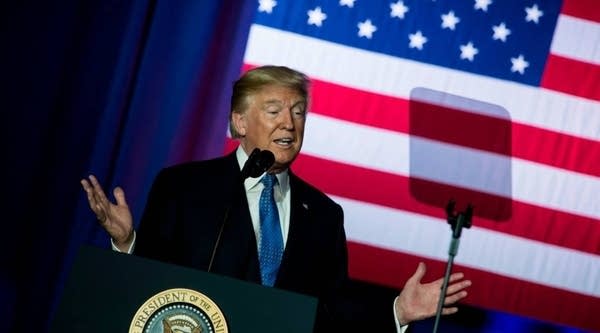2017 is no 1986 when it comes to tax reform
The ingredients used 30 years ago to rewrite the code don't exist today, including shared principles.

The last time the country’s tax code was overhauled was in 1986. Thirty-one years ago. The forces that made the overhaul possible back then help explain why it hasn’t happened since.
The 1986 reforms actually began a couple of years before, when, as now, everyone seemed to be complaining about and campaigning on the tax code.
“There became a mood in the country that the tax system in our country was not fair, it was too complicated,” said former Sen. Byron Dorgan. In 1984, he sat on the House Ways and Means Committee. “President Reagan campaigned on it, as did Democrats in the Congress.”
The president, the House and the Senate would over the next two years develop their own templates for tax reform. The first to push a plan out of the door was the Treasury Department, which, at the direction of the president, came up with a study for simplifying the tax code.
Gene Steuerle, now at the Urban Institute, worked on that study at Treasury.
“One of our tricks to get this study going was to build a base on principles most people held in common,” he said. The people were Democrats and Republicans. The principles were two: People with equal income should pay the same amount in taxes, and governments should avoid setting up incentives that distort markets.
Former Sen. Bill Bradley was a co-sponsor of the Senate’s version of tax reform. He said senators worked from similar principles.
“The message there was that there was something in this for everybody,” Bradley said.
During the acrimonious committee deliberations in the House, “the Republican Treasury secretary and his deputy came to sit in on the markup in a Democratically controlled committee — that would never happen today,” Dorgan said.
The health care debate demonstrated how difficult bipartisanship is today.
“Right now, most of what I’ve seen in tax reform resembles what we saw earlier in health reform — it starts off with a set of wants,” Steuerle said. “Wants are not bad, but they’re not a base of principles around which you can organize real reform.”
That’s not to say, though, that back in the mid-80s there was some kind of national kumbaya moment around tax reform.
The 1986 reform “never had a robust life,” Dorgan said. “It always looked like it was on oxygen.”
“It almost fell apart numerous times,” confirmed Joe Thorndike, tax historian with Tax Analysts, a nonprofit tax policy publication. Democrats were still reeling from Reagan’s victory and Republicans were divided on how to pay for tax reform. Both parties were miles apart from one another. But “no one wanted to be responsible for killing tax reform,” Thorndike said. “It was starting to develop some political momentum.”
The basic framework that both Congress and the president agreed upon, in its simplest version, was to broaden the tax base — shut down loopholes, get more people paying taxes — in order to lower the tax rates for people generally.
“The top rate drops to 28 percent from 50 percent for individuals,” said Thorndike. “That’s a gigantic drop. But in exchange for that, people gave up a lot of things.”
The fact that so many interests had to give up something — deducting interest on credit card debt, for example — was in some ways a plus.
“So that if you came to me and said, ‘Why are you coming after my tax break?’ I could say, ‘Well, we came after everybody’s tax break. You tell me why your special tax break should be kept?’” Stueurle said.
But among all the loopholes that were closed in 1986 was one in particular that made tax reform back then much easier, according to Dorgan. Tax shelters were rampant at the time.
“Closing that huge loophole came up with some significant revenue that allowed us to reduce the tax rate generally,” he said. “That doesn’t exist today.”
Tax historian Thorndike said many of the other loopholes that were closed belonged to business interests. Today, it’s business taxes that are supposed to get lowered in tax reform.
“The big beneficiaries in 1986 were individuals, and businesses ended up picking up the tab,” Thorndike said.
There was a point when House Republicans appeared to be ready to revolt against the final version of the tax reform bill.
“But in the end, President Reagan famously traveled to Capitol Hill and met with the House members of the GOP who were threatening to oppose it and got that turned around,” Dorgan said.
Even that is less possible today. At that time, “leadership and the president and others had a fair amount of sway with members of Congress,” said Dorgan. “They had the capability of suggesting, ‘You know what, we need you to be part of the team here, maybe the next time there’s a request for earmark funding for your district there isn’t a ghost of a chance you’ll get it!’” That kind of power has been dramatically reduced today, meaning the chances that members can successfully revolt are much higher.
2017 is no 1986.
“Most ingredients that existed in 1986 do not exist now,” Dorgan said. And for all the successes of the 1986 tax reform, many of them were undone in the decades that followed.










